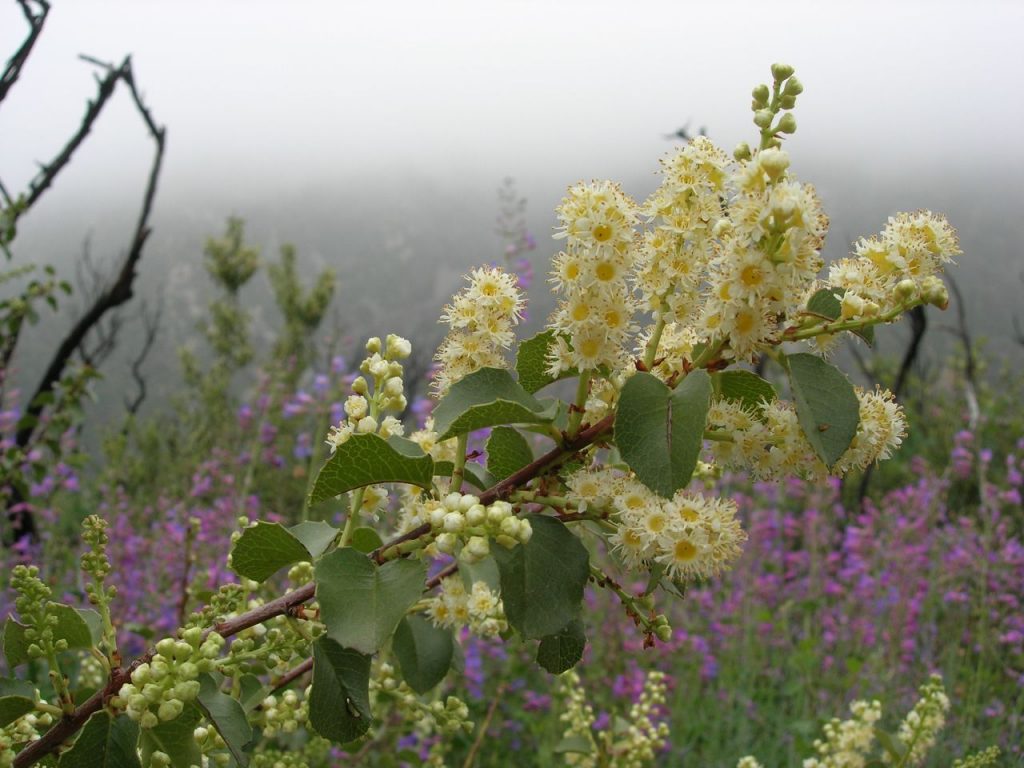
This evergreen shrub or small tree is native to the desert chaparral areas of the Mohave desert, coastal California, Baja California and Baja California Sur and is a member of the rose family, Rosaceae, that also includes apple, lady’s mantle, and goat’s beard. The plant grows 8-30′ tall and has shiny, dark green, holly-like leaves that are 1/2-5″ long, hard and leathery, with toothed spiny margins. In spring, feathery racemes of small white flowers appear and are followed by purple to black drupes 1/2″- 1″ in diameter with a thin pulp around a large single stone. The flowers, fruit and foliage serve as a food source for butterflies, bees, pollinators, birds, and mammals including big horn sheep and mule deer. Plants are very drought tolerant and take pruning once or twice a year making it a good choice for use in a xeriscape especially as a hedge. In addition, plants are valued for erosion control on steep hillsides. The genus name, Prunus, comes from the Greek word προύνη meaning plum, a prominent member of this genus. The specific epithet, ilicifolia, comes from the Latin words ilex meaning holm oak (now the genus name for holly) and folia, meaning leaf, referring to the resemblance of the leaves to Ilex leaves.
Type: Evergreen shrub or small tree
Outstanding Feature: Flowers, drought tolerance
Form: Rounded; upright, columnar
Growth Rate: Rapid to moderate
Bloom: Racemes of small white flowers in spring
Size: 8-30′ H x 8-25
Light: Full sun; tolerates partial shade
Soil: Fertile, dry to medium-moist, rapid draining
Hardiness: Zones 6-10
Care: Water sparingly in summer once established
Pests and Diseases: White flies, aphids, caterpillars, armillaria, root rot, rust, sooty mold, verticillium, various viruses.
Propagation: Fresh seed or stored seed with 3 months stratification, semi hardwood cuttings, softwood cuttings.
Outstanding Selection: Two subspecies are recognized that differ most significantly in height
Photo Credit: joedecruyenaere Wikimedia Commons